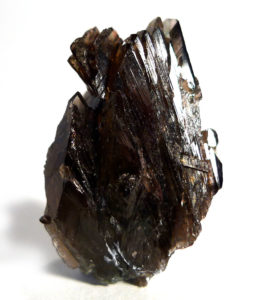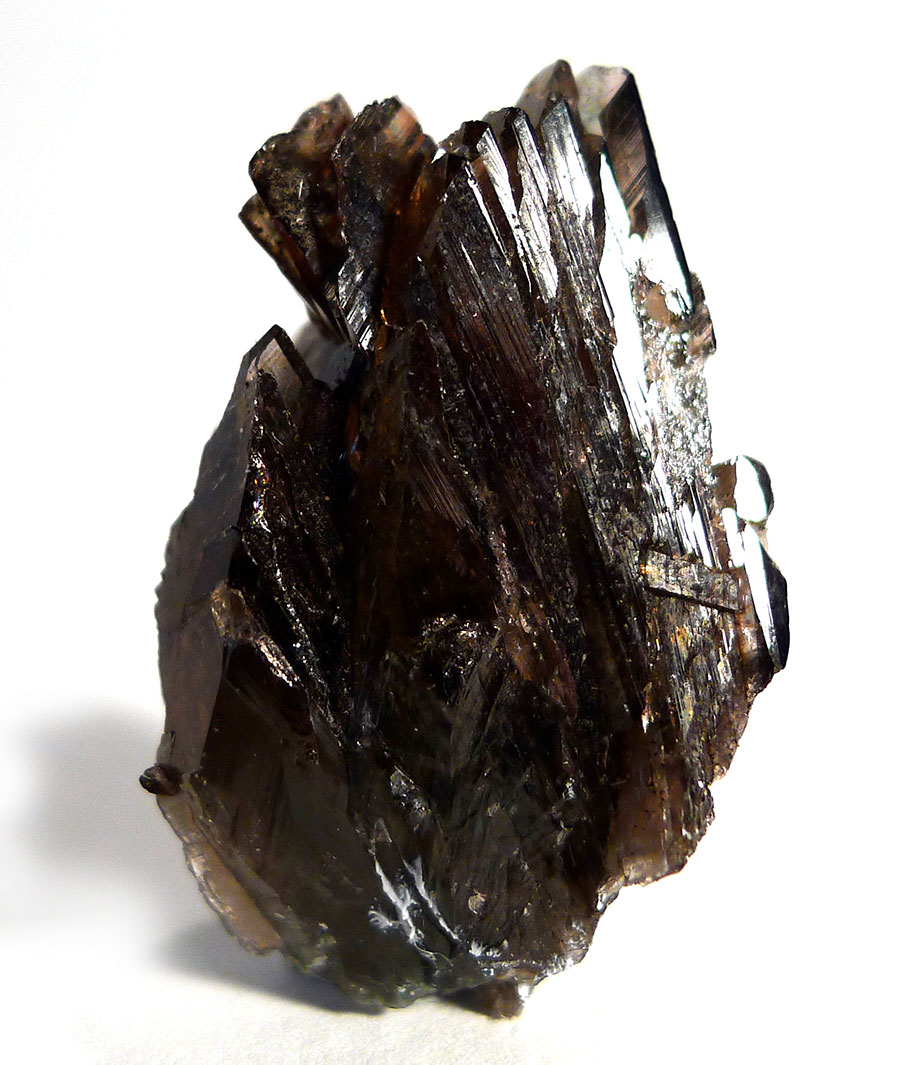Properties:
Ferro-axinite’s energy starts at the Root Chakra, and moves upwards, fanning out as it goes. It opens the Crown and Third Eye Chakras, and also the Bindu Visarga, facilitating psychic abilities, spirituality and communication with our Guides. There is also a sense of veiling, allowing one to work openly while at the same time feeling protected. On a deeper level, it can be a powerful aid to inter-dimensional and astral travel, and used directionally, can even cut doors or windows into other dimensions. On a physical level, ferro-axinite can gently aid healing of bone tissue.
Mangano-axinite exhibits many of the characteristics of ferro-axinite, without the grounding and shielding qualities, and its work appears to start with the heart, not the root. Even a small example is surprisingly powerful. When held, especially in meditation, it activates and elicits re-alignment within and without, and on a physical as well as spiritual level, so will balance the major chakras while at the same time balancing the subtle bodies. According to Melody, it can be used for structural alignment as well. Mangano-axinite can strengthen Chi (life force) within the physical body, at the same time as it enhances our openness and connection with spirit, thus strengthening our ability to communicate with our guides. Its lovely and loving energy lifts the burdens we carry, so the body feels lighter and life less onerous, and we are reminded of the joy of existence – a quality it shares with petalite. It leaves us feeling calm yet awakened.
Attributes:
- Chemical Formula: : Ca2Fe2+Al2BSi4O15OH; Ca2MgAl2BSi4O15OH
- Group: Silicates – sorosilicates
- Crystal System: Triclinic
- Hardness: 6½ – 7
- Birthstone: Secondary birthstone for Aries
- Chakra: Root (Fe); Heart (Mg); affects all
- Element: Earth (Fe); Water and Spirit (Mg)
Mineralogy:
Axinite is a group of minerals in which iron (ferro-axinite or axinite Fe) may be substituted by magnesium (magnesio-axinite), or manganese (mangano- or mangan-axinite, or axinite Mg). A fourth mineral, tinzenite, contains both iron and manganese. Colour can be brown, clove-brown, plum blue, pearl grey, pink; colour is not reliable for identification, as all varieties may display any of the colours. It is most commonly found in low temperature and contact metamorphic rocks, and also in mafic igneous rocks. Axinite is both pyro- and piezo-electric.
History and Tradition:
Originally named Espéce de Schorl by Johann Gottfried Schreiber in 1781. Named Schorl violet and Schorl transparent lenticulaire by Romé de Lisle in 1785. Named Thumerstein by Abraham Gottlieb Werner in 1788, later spelled Thumite. Named Yanolite by Jean Claude de la Métherie in 1792. Named Glasschörl by Blumenberg in 1799 (also glasstein). Named axinit in 1797 by Rene Just Haüy from the Greek αξίνα (“axina”) for “axe”, in allusion to the common habit of its crystals. Renamed ferroaxinite by Waldemar T. Schaller in 1909 for iron dominance in the formula. Renamed with suffix “-(Fe)” by IMA in 2007. Information from MinDat.org)


